
Source: Electrician Home
Electrical Technicians Technical Club:200037175
Electrical Personnel Procurement Alliance Group:436576602
Application Format:City Name – Company Name (Electrical Engineer Job Title)
Before starting the second part of voltage testing, let’s insert a small section A:
How to choose the multimeter probe socket under different ranges
First, let’s take a look at the sockets available on the multimeter
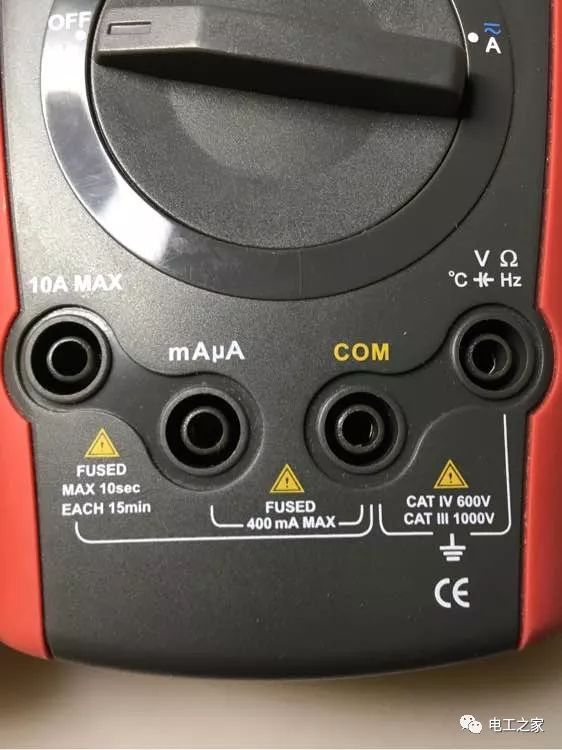
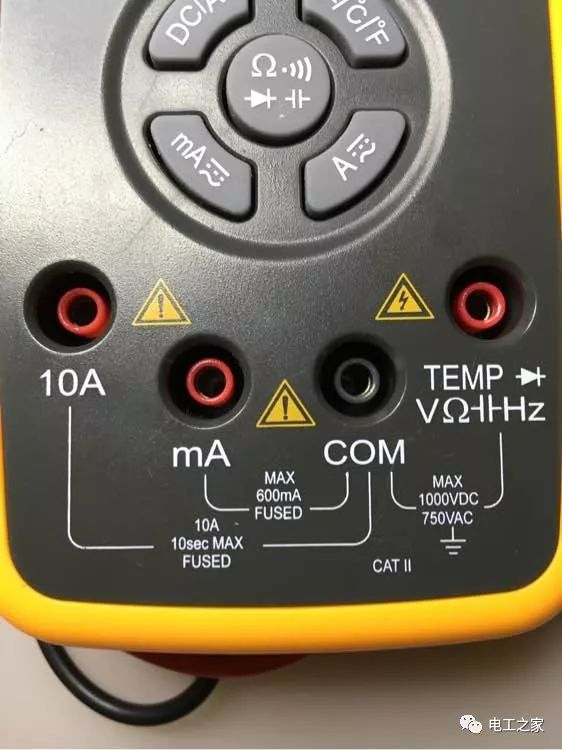
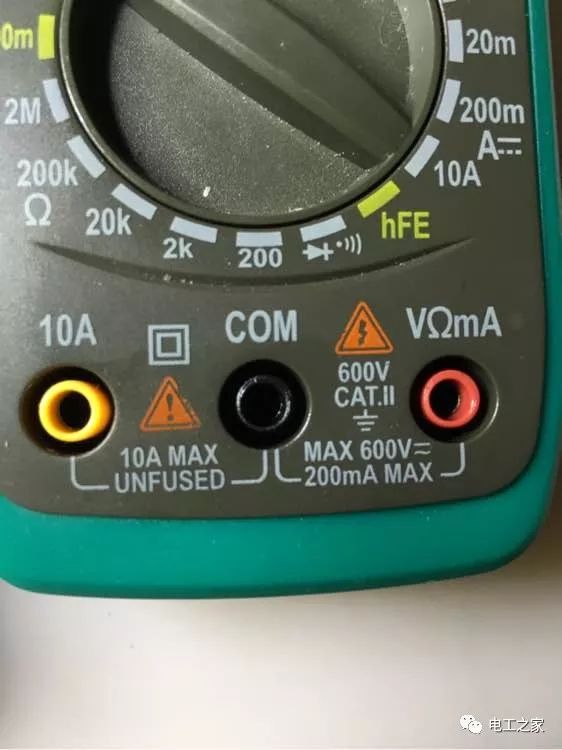
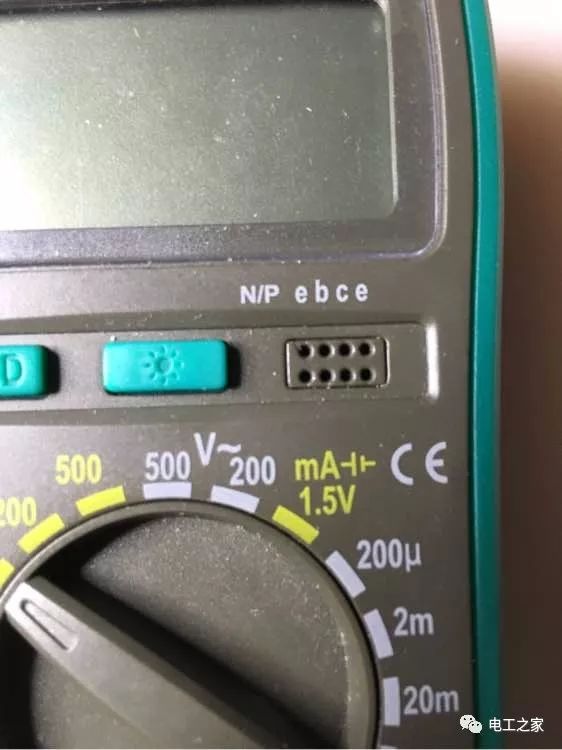
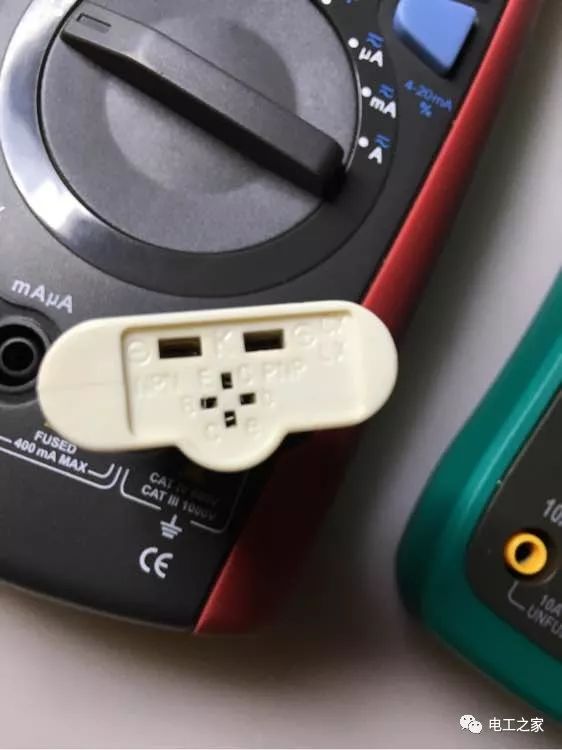
First, the black probe is always connected to the COM socket, which is infallible (for example, the connections of the two multimeters below)
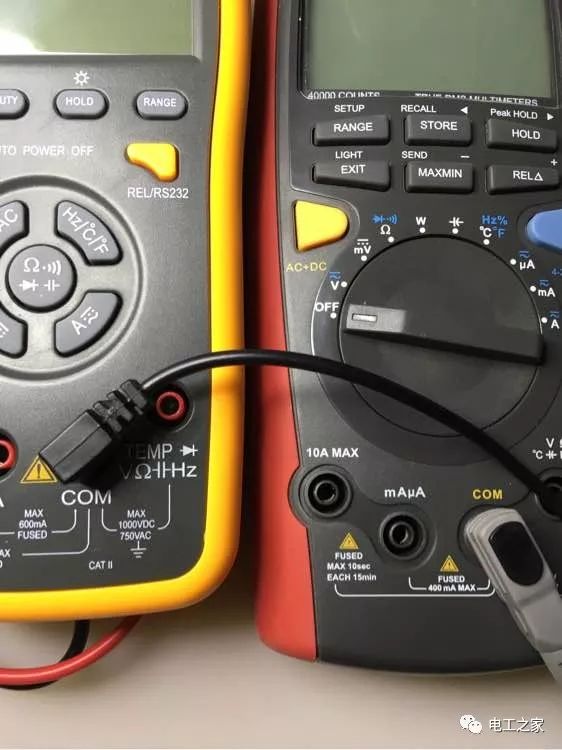
Then, which socket the red probe connects to depends on the range you are using, as shown in the figure below
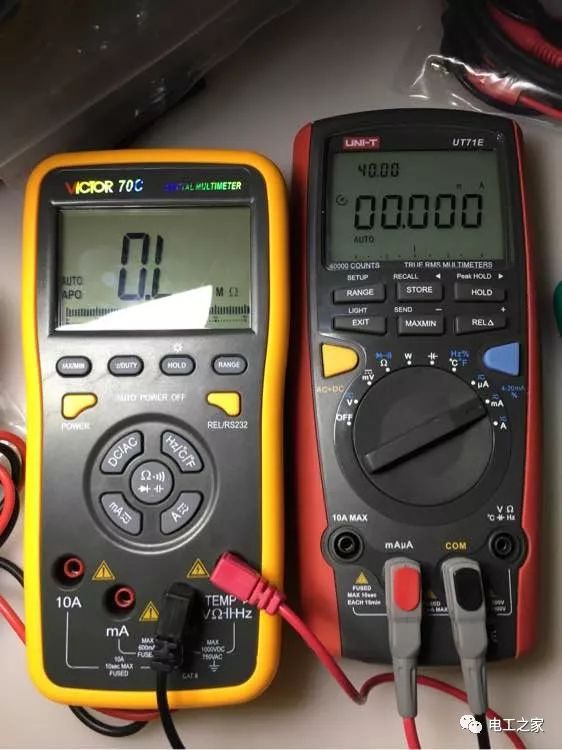
Correspondence chart of ranges and sockets
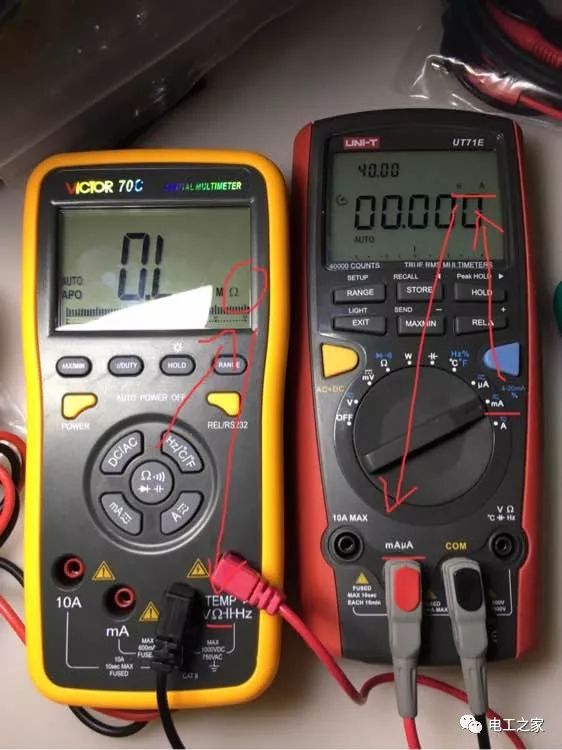
If you need to measure temperature, how should the meter in the figure be connected?
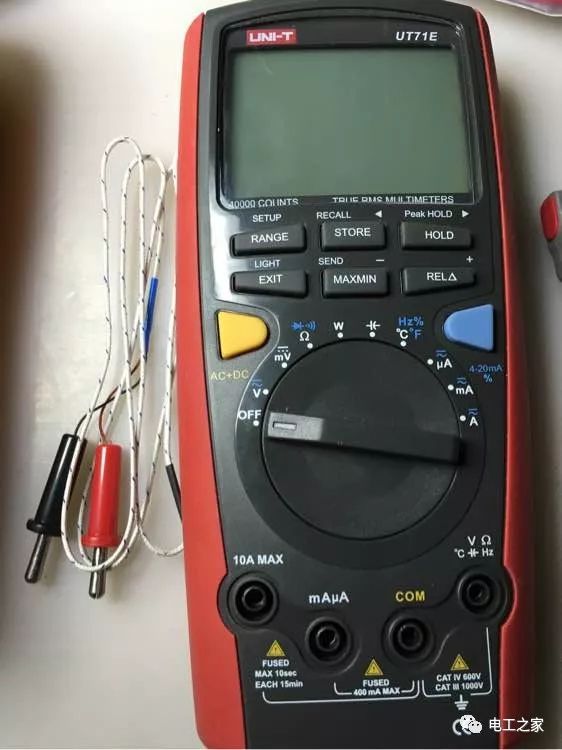
Let’s see if it matches your expectations~
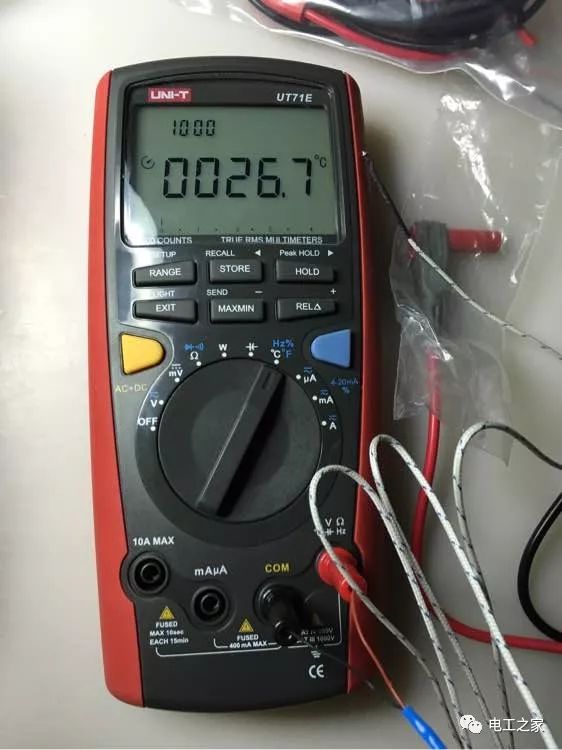
[Key Point III] The more dangerous sockets on the multimeter, and some important information marked near the sockets.
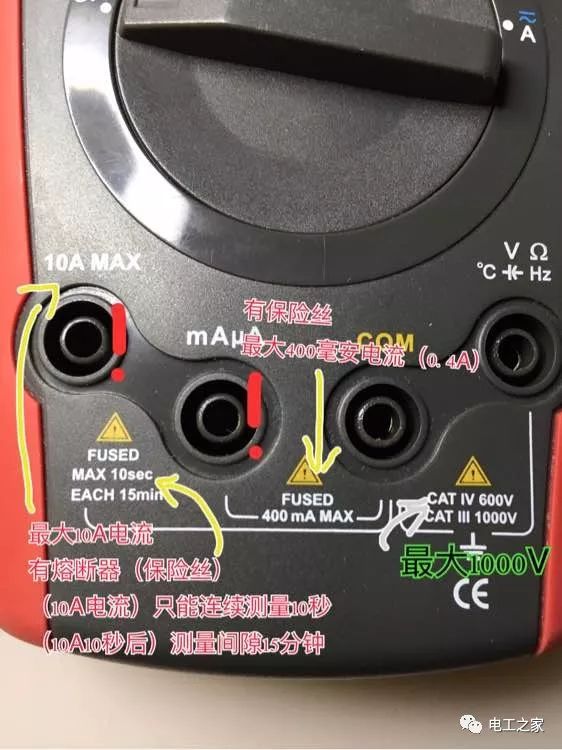
Now let’s get to the main topic: Measuring Voltage with a Multimeter
Different voltage ranges of various multimeters: Illustrated explanation [V —— Voltage] [~ —— AC] [ — —— DC] [— —— DC range (can measure AC)]
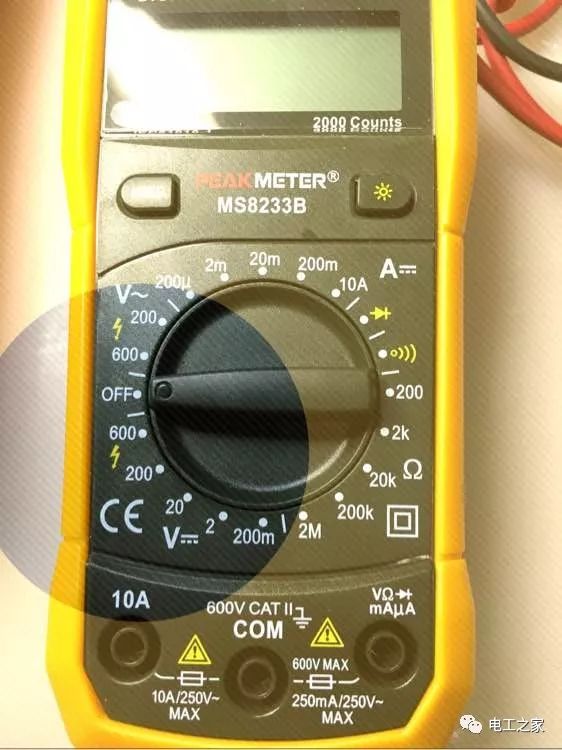
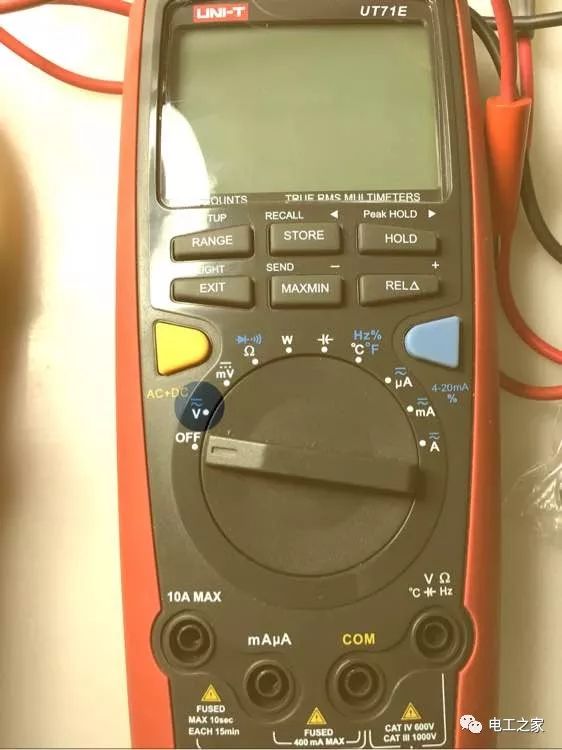
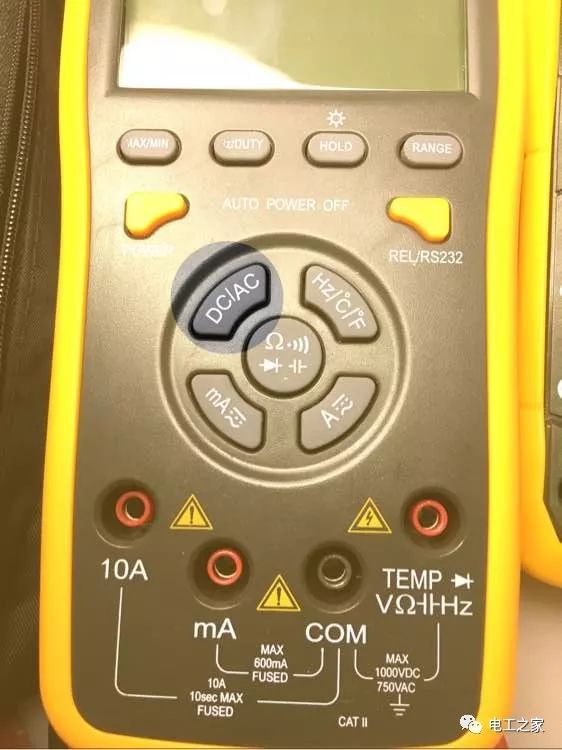
[Supplement] DC or DCV — Direct Current, AC or ACV — Alternating Current question: Do the three dots under the DC range indicate that it can measure AC?
Answer: The three dots actually represent a “dashed line”, meaning it can measure the pulsed DC converted from AC (half-bridge rectification). In simple terms, that is used for measuring DC current.
The voltage range of the meter is the most robust range; as long as it does not exceed the overload protection limit, even if you use the low DC voltage range to measure high AC voltage, there is generally no risk (this is only for digital multimeters; analog meters must distinguish ranges). Therefore: as long as you do not measure electric fly swatters, electric nets, or electric rods, it will not break. (There are some high-voltage circuits above 1000V inside household appliances, but they are very rare, and the output high voltage is not high-speed pulses, so the meter has a chance to activate automatic protection.)

Then check the manual… and find it contradicts itself… The Baogong meter annoyingly divides into two groups of protection (the red line part), where the 200mV range is only protected up to 250V (thankfully, measuring mains electricity won’t break it…)
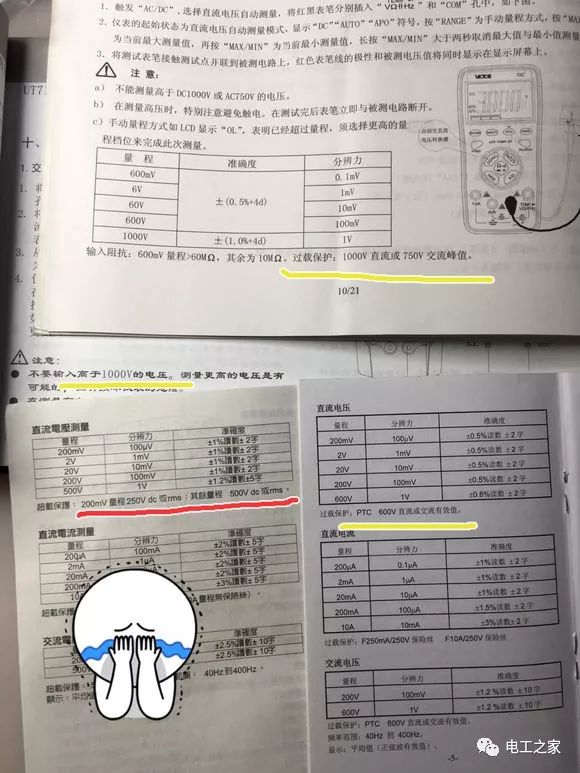

Manual range voltage measurement. 1. The high range of the voltage setting will lose accuracy, but accuracy is not something to worry about too much~ It won’t be far off, just use it casually (only for digital meters). 2. The voltage of batteries varies greatly; regardless of how it is marked on the battery, the actual voltage is what the meter measures.
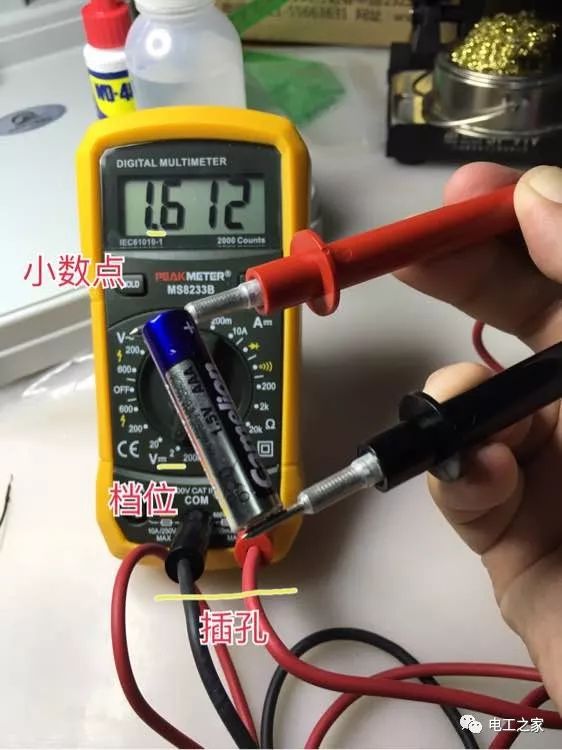
To add, the range cannot differ too much. Because the multimeter’s specifications include a trailing error, such as a typical 3.5-digit specification is 0.5% + 3, measuring a voltage of 1.600V, the 2V range may display 1.589 1.611 (1600*0.5% + 3 = 11), if you must use the 1000V range, the reading may be 0
1.611 (1600*0.5% + 3 = 11), if you must use the 1000V range, the reading may be 0 4 (1*0.5% + 3 = 4).
4 (1*0.5% + 3 = 4).
Automatic range battery measurement
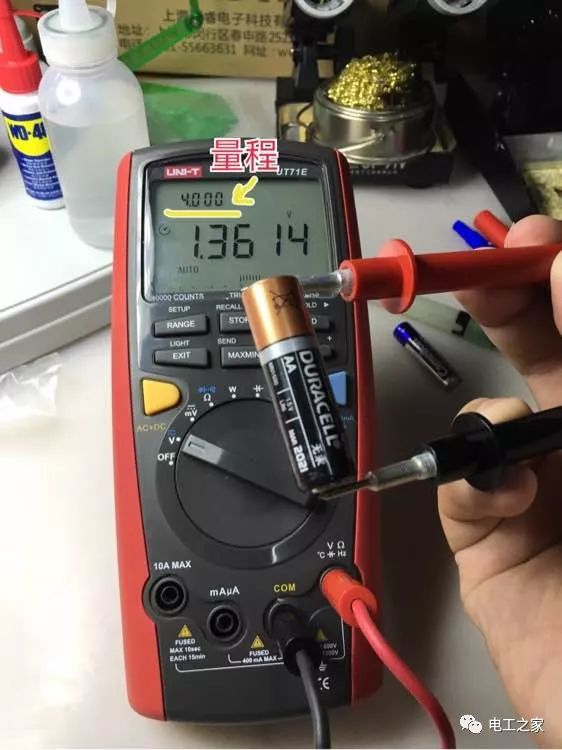
The model below is also an automatic range. When set to the voltage range, the default test type is “AC” voltage, and you need to manually press the “select button” to switch the voltage test type to “DC” voltage.
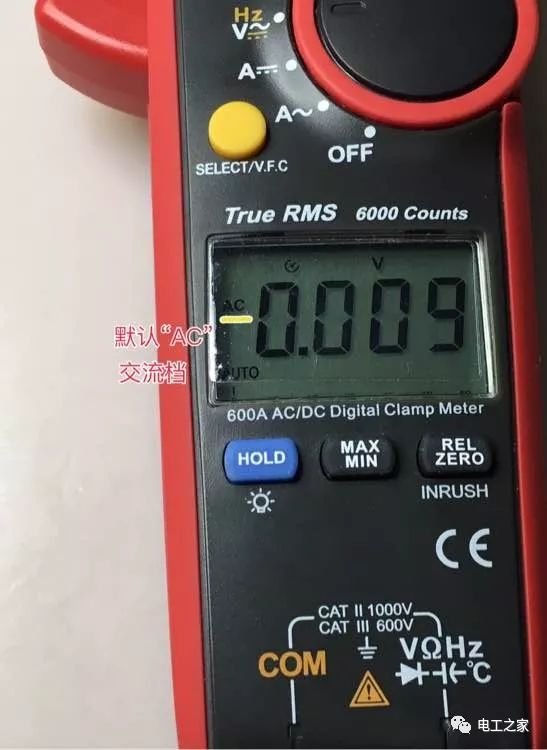
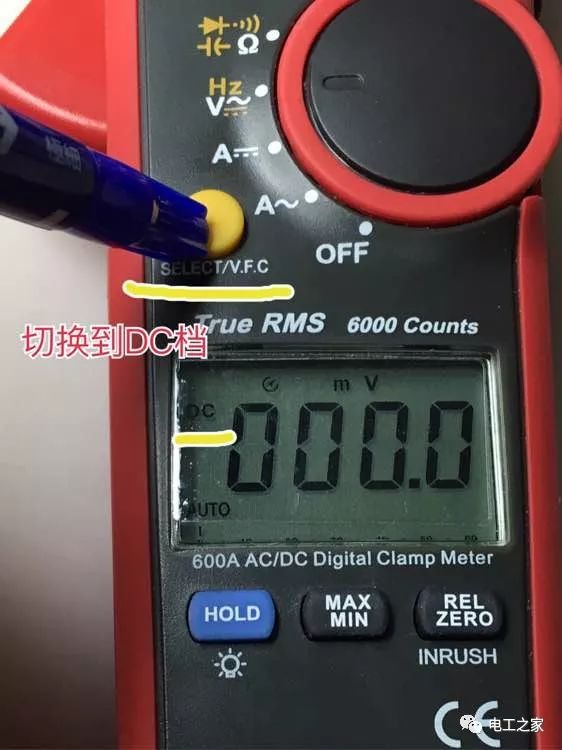
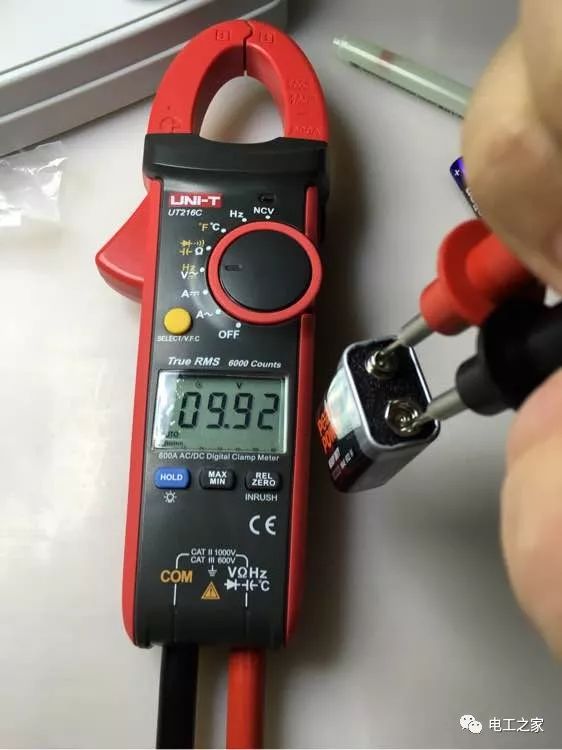
Let’s also measure another one~
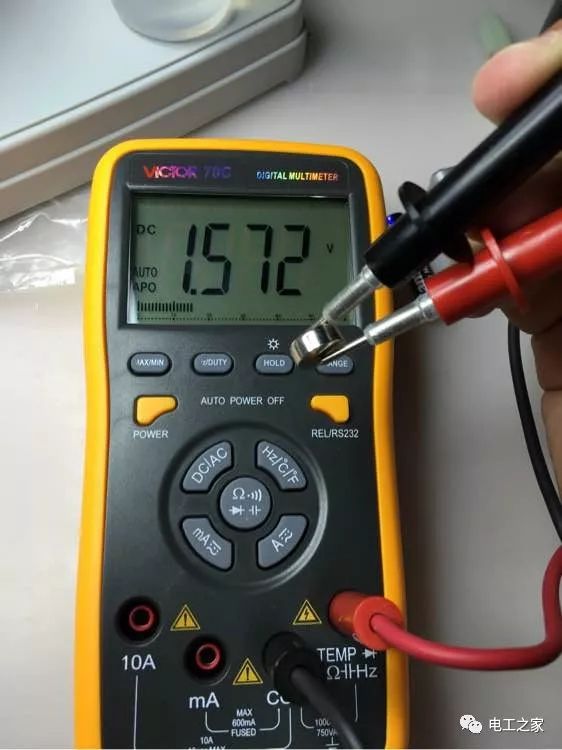
Before starting the AC voltage test, let’s look at a few important points: [Key Point IV] The voltage range is robust, but that does not mean there is no danger. The danger comes from 1. Pulsed high voltage 2. Changing ranges while the probes are still connected to a live circuit (while measuring voltage), do not switch ranges! (During the switching process, the dial switch may pass through resistance, continuity, diode, capacitor, and other ranges, which can easily burn the meter, and in severe cases, burn the appliance or injure people.) So far, I have not seen any multimeter at this level that can protect against pulsed high voltage; if you need to measure it, you need to purchase or make high-voltage probes; when measuring voltage, do not disconnect the power supply from the circuit being tested, directly switching ranges is also a major cause of burning the meter. This issue is precisely because the voltage range is too robust, making it easy to be careless. Now there are multimeters that have full-range burn protection, but the standard should still be followed as much as possible: [Disconnect the probe connection before switching ranges]
Next, I will demonstrate how to use a multimeter to measure AC voltage~ First, prepare the multimeter and the power outlet
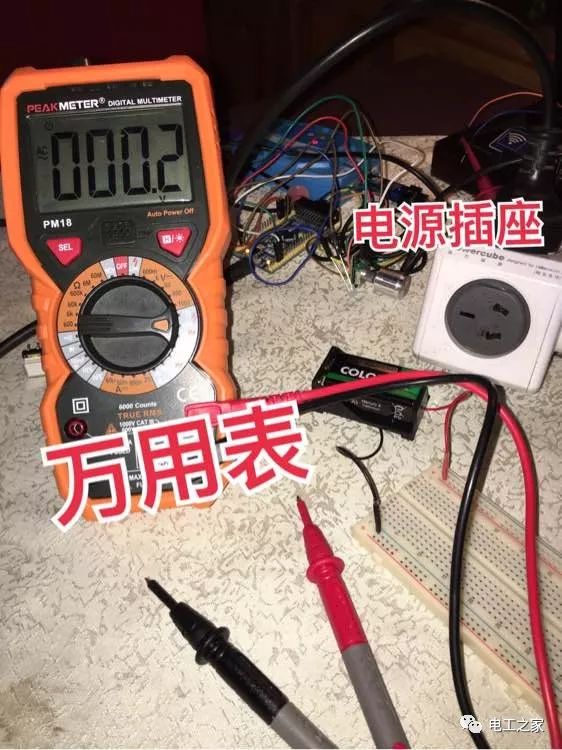
When measuring AC voltage, the probe insertion method and range are as shown in the figure (the red line indicates 1. 600V range 2. AC voltage range 3. Red probe inserted into the voltage measurement hole 4. Black probe inserted into the common COM hole)
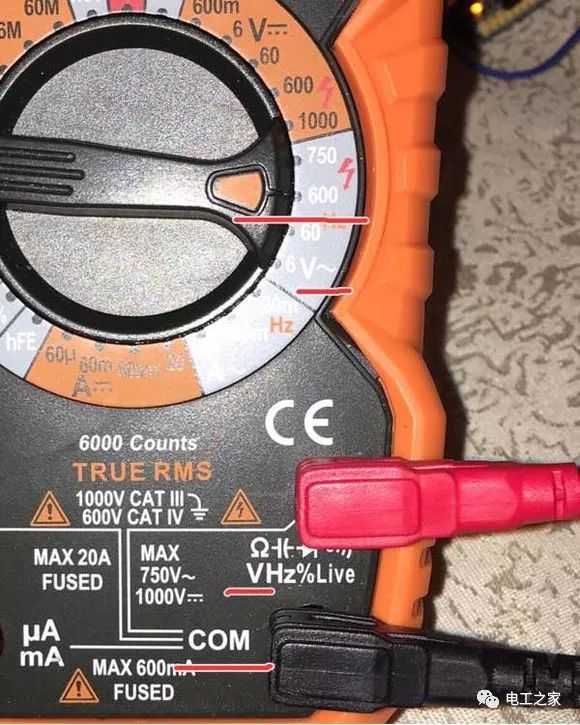
Then the more challenging part is… inserting the probes into the socket~ It’s not that there is any danger, but 1. The national standard socket in SB country generally cannot be inserted without a very sharp probe 2. Even if it can be inserted, the probe pins are generally not long enough, and the probe pins do not make good contact, so you have to hold it with your hand and poke it around a bit to fix it. 3. AC power does not distinguish between neutral and live, do not expect the multimeter’s AC range to directly measure the neutral and live wires
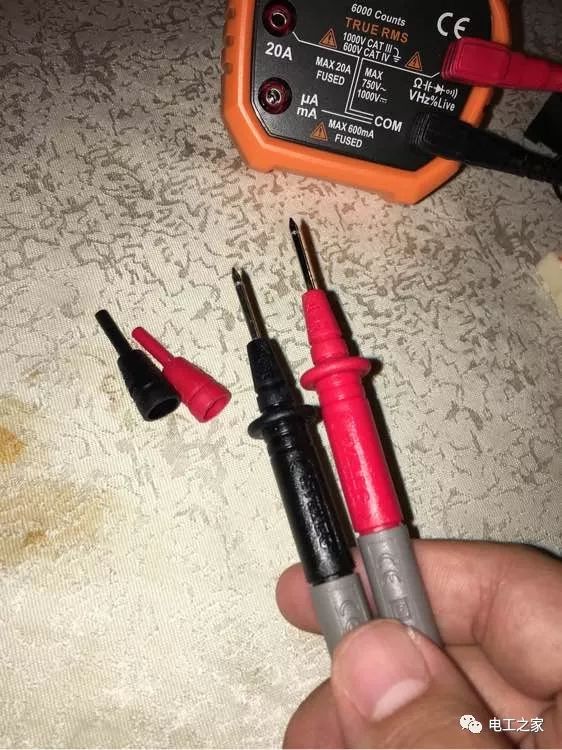
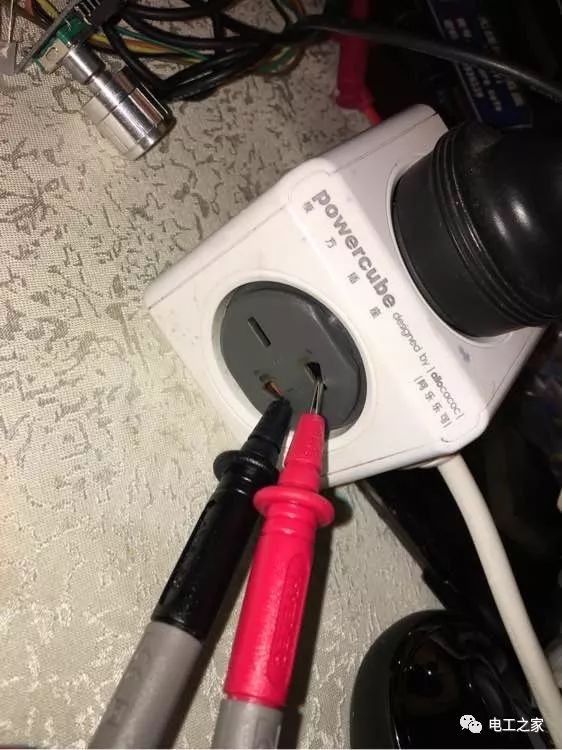
The result is as shown; do not expect to see 220V… This voltage of 200V to 250V is normal; the readings measured in different places or even at different times are all different.
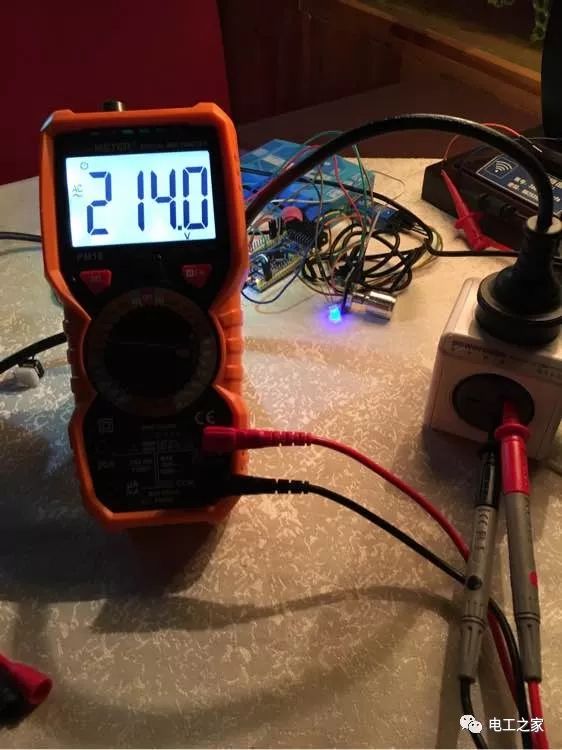
By the way, here is a way to hold the multimeter that can avoid holding both probes with one hand~ (The probe holder on the back of the multimeter is for this purpose, but the manual basically does not mention it~
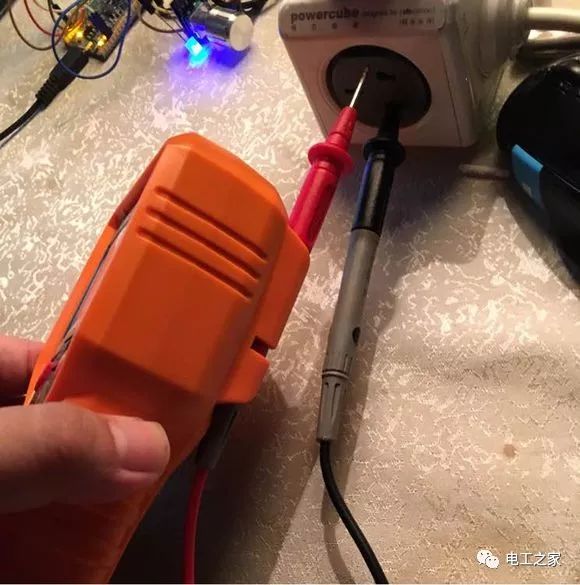
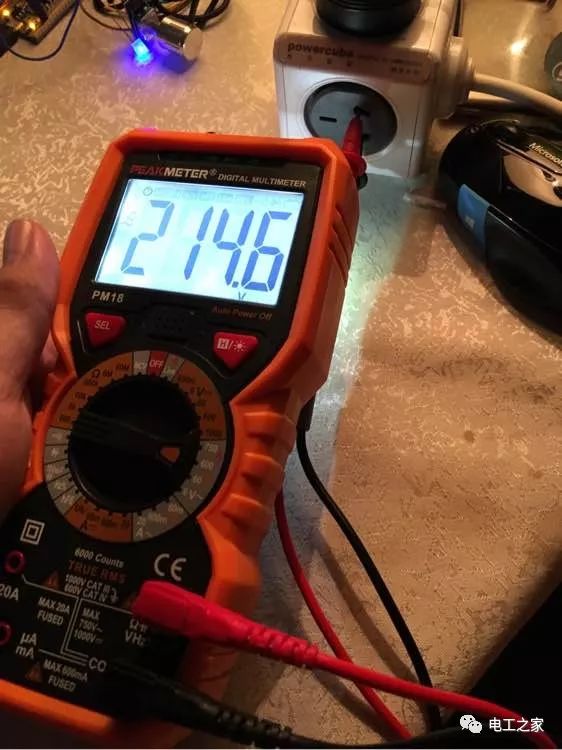
Next, I will introduce how to use a multimeter to distinguish between neutral and live wires. First, when using the multimeter as a voltage tester, generally, you do not need (do not) insert the black probe; just use the red probe as the probe
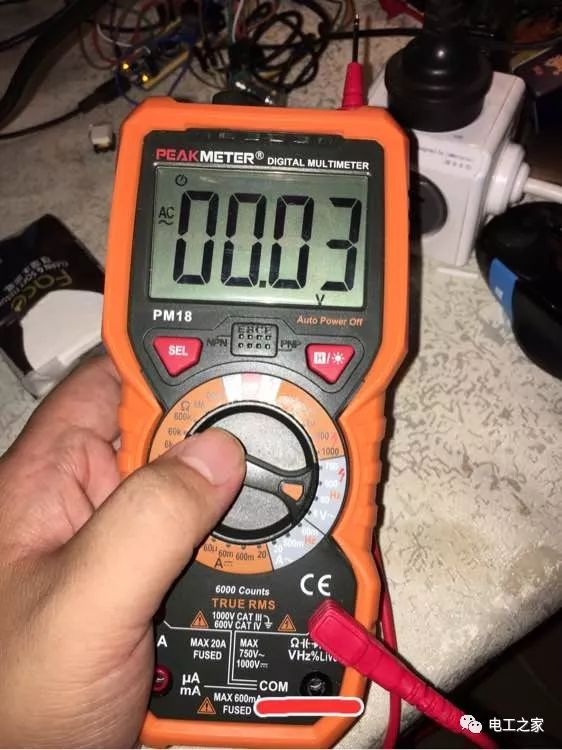
Select a small voltage range. [Key Point V] Every multimeter I have seen can distinguish between neutral and live wires; it does not necessarily need a special “live wire detection” range. You just need to select an appropriate small voltage range, and touching one probe to the socket being tested is sufficient. As for how small the range should be, whether to use AC voltage or DC voltage range depends on the multimeter; high-sensitivity (not too cheap) meters can use the AC range, and if that doesn’t work, try the DC range. One point to note is [only one probe needs to touch the socket!] At this time, because the black probe is suspended, it does not form a closed circuit, so there is no need to worry about the safety of the device and personnel~
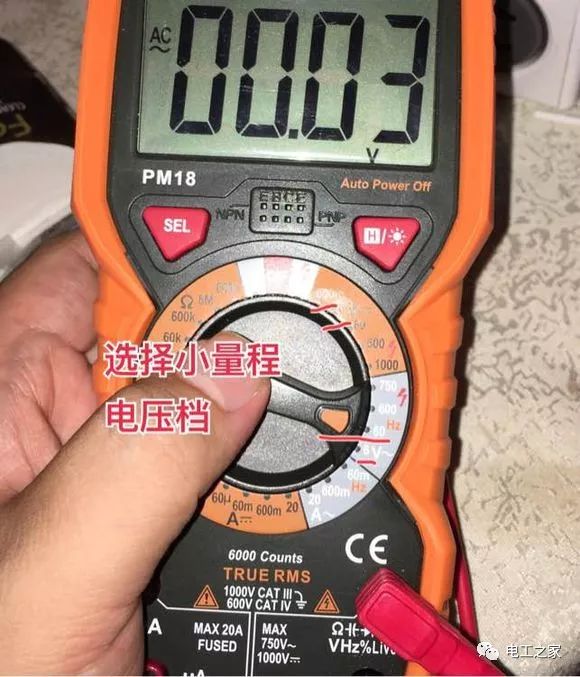
The test result is as shown (it turns out that the neutral and live wires in this café are reversed…
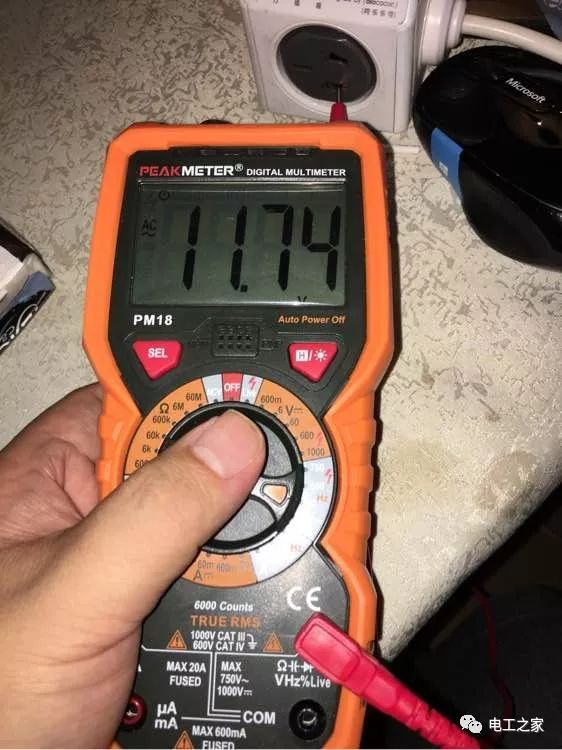
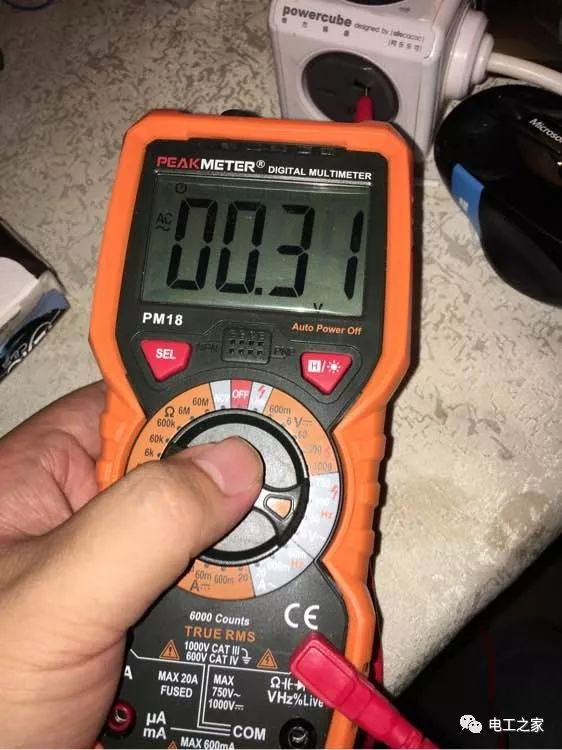
If there is a neutral and live wire (LIVE range), it will be even more convenient, with sound and light indicating neutral and live, no need to read the numbers
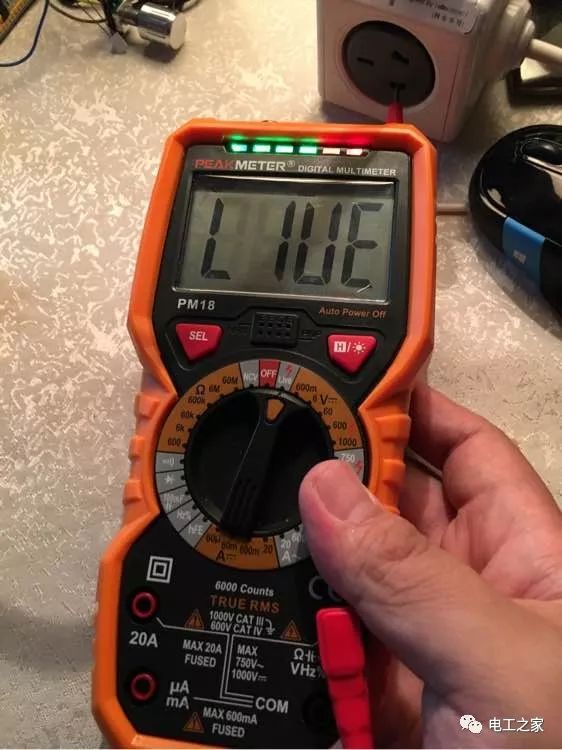
Additionally, if there is an NCV range, measuring neutral and live wires is even more convenient
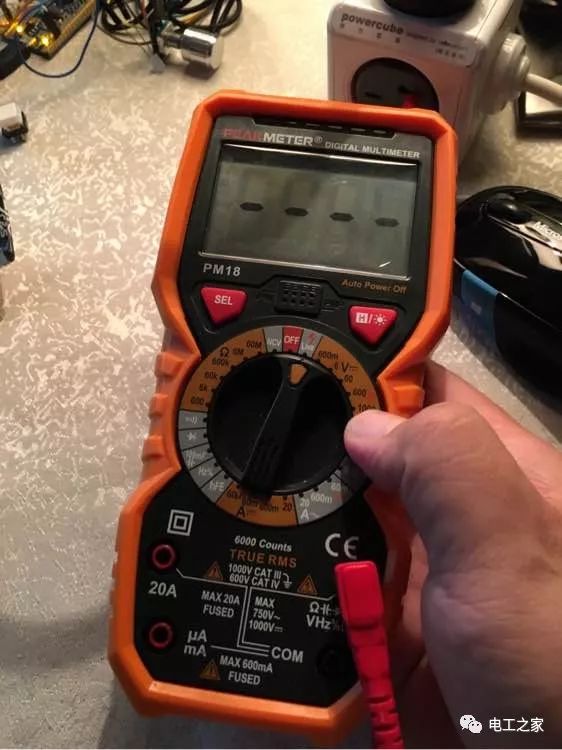
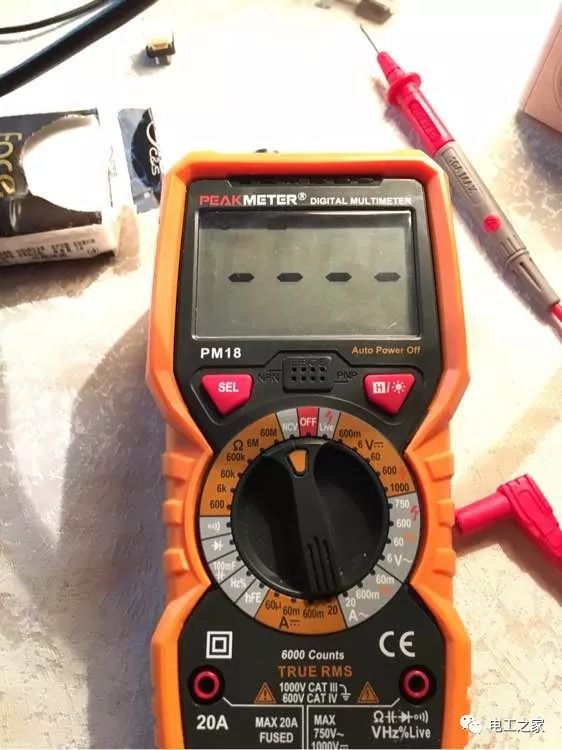
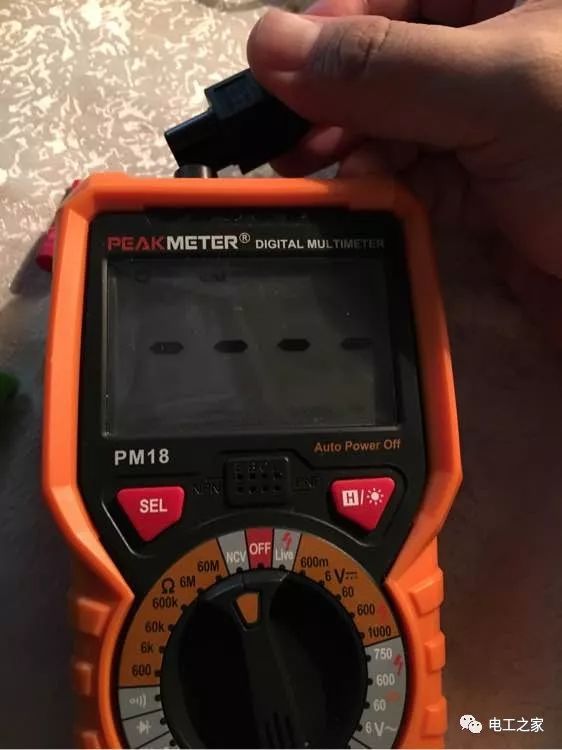
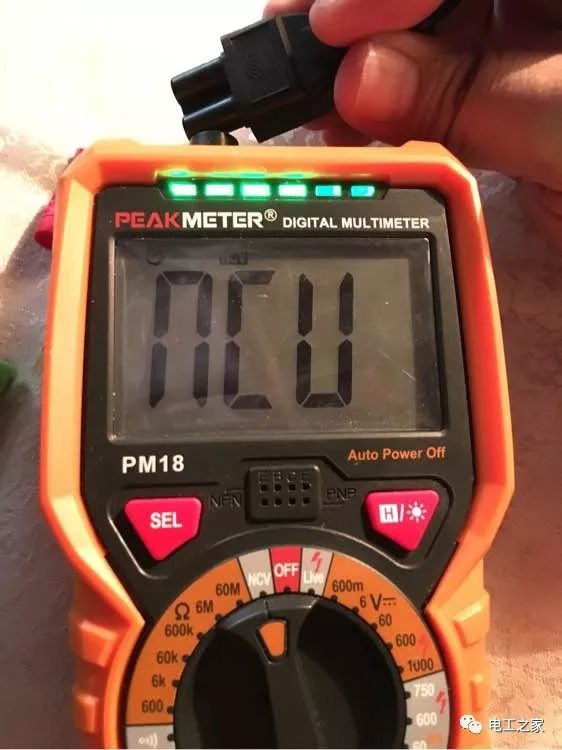
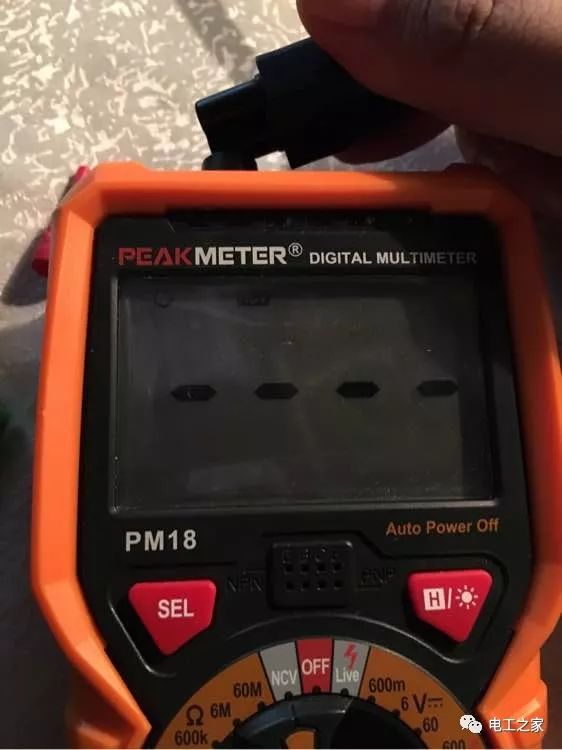
As for tips, the NCV range can also 1. Check the approximate location of the neutral and live wires inside the wire insulation (not precise but feasible) 2. Use the probe as an antenna, as an alarm for detecting unexpected power-on during maintenance, or to detect whether there is voltage at a distance in a strong interference environment or to distinguish between neutral and live wires
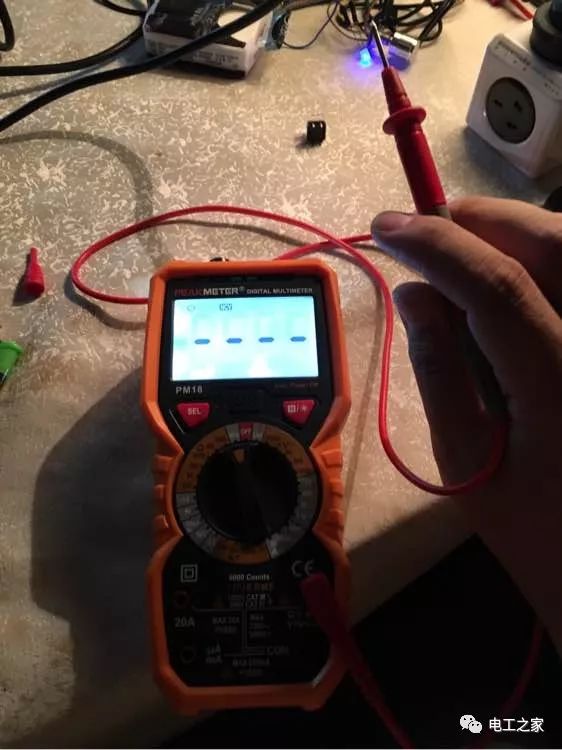
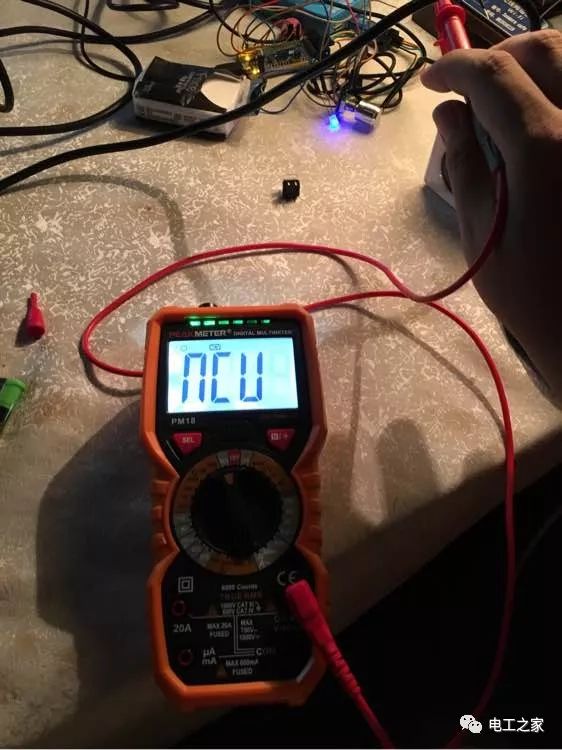
Previously, I demonstrated how to measure DC voltage, measure AC voltage, measure live wires, and non-contact voltage measurement (NCV). Finally, I will address a common question from beginners: “How to measure if I don’t know whether the voltage is DC or AC?”
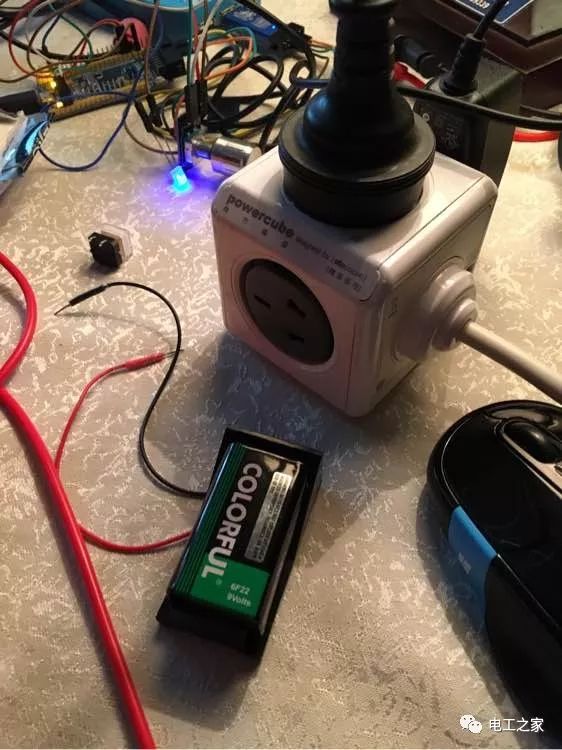
Because other tutorial posts will discuss this, here I will only provide the most practical and simple introduction: 1. DC power has positive and negative poles, while AC distinguishes between neutral and live wires (the live wire has fluctuating positive/negative voltage, while the neutral wire is the “0 voltage” line). Therefore, if you see a “+ -” mark, it is definitely DC, as shown in the figure below
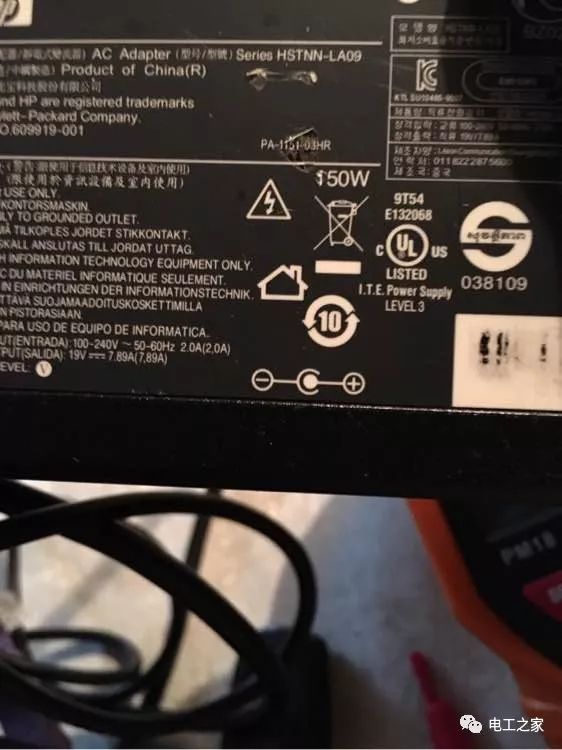
Most batteries/small household appliances are DC (like LCD TVs, although they connect to AC, the screen, LED light board, and built-in computer board all use DC). The power grid supplies users with AC because AC has inherent advantages in transmission and voltage transformation, saving a lot of costs compared to DC power supply. (A long time ago, the “electricity” invented by Edison was DC; at that time, the generator was a direct current generator, and the electricity running on the lines was also DC. This situation changed only after a young man named Tesla promoted AC. Tesla thus became Edison’s number one rival, and ultimately he revealed Edison’s dark side with his tragic death… but that’s another story)
Since the probe socket positions for measuring AC and DC voltage are the same, the only difference in multimeter operation is the range setting.
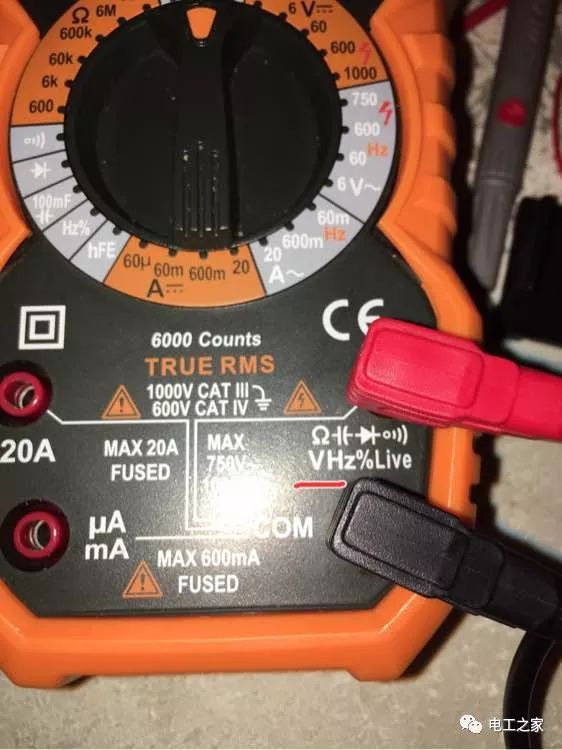
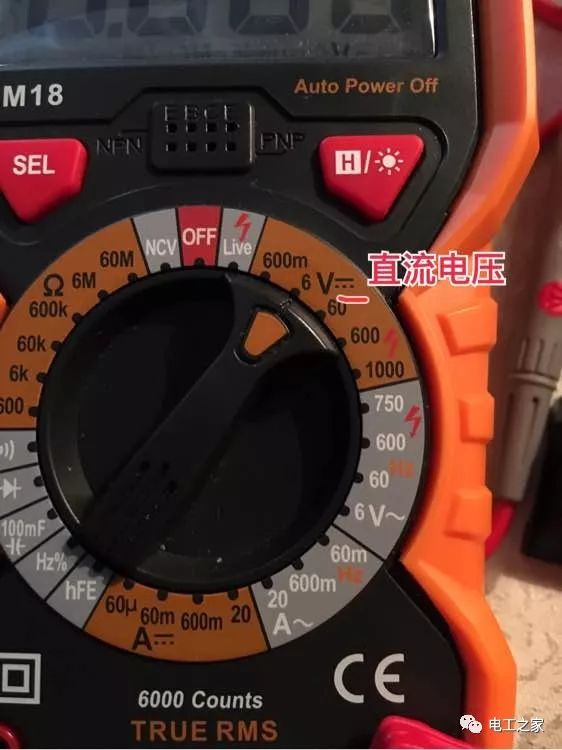
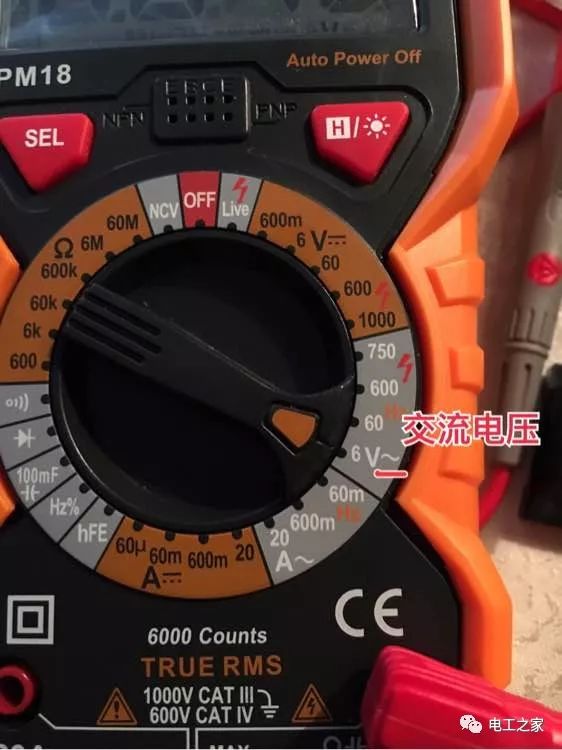
Comparing the results of measuring 220V AC voltage using the AC voltage range and the DC voltage range
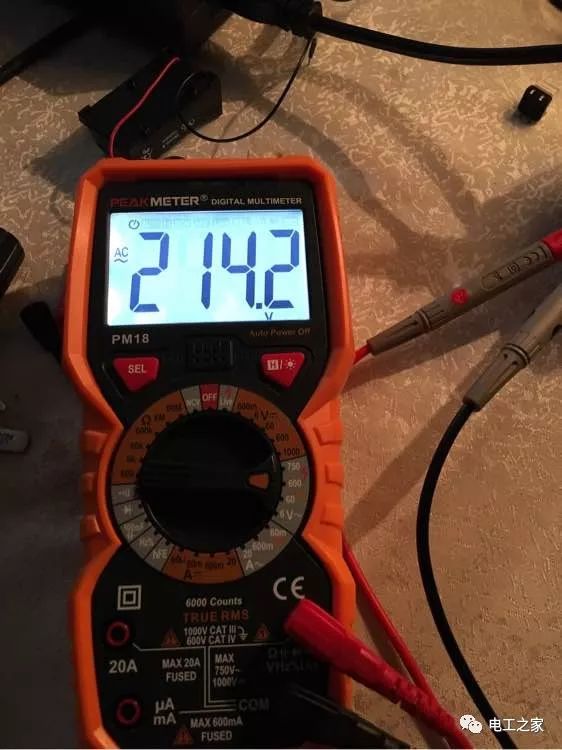
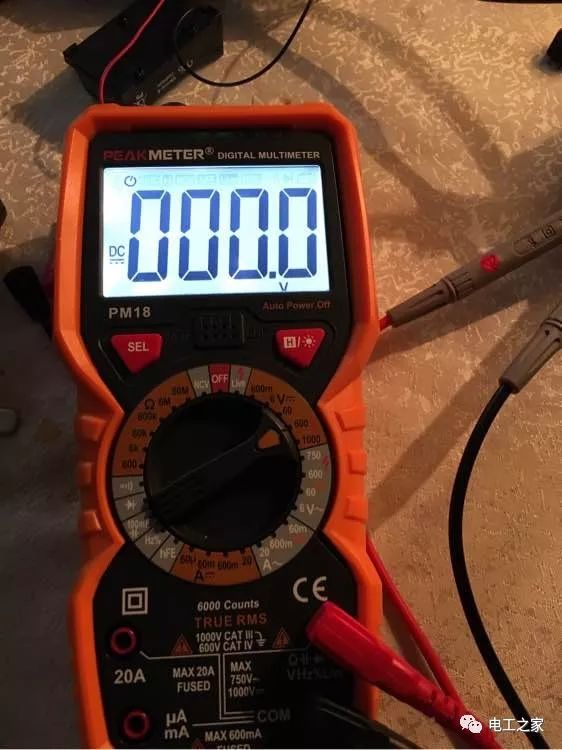
Now comparing the results of measuring the 9V battery’s DC voltage using the DC voltage range and the AC voltage range
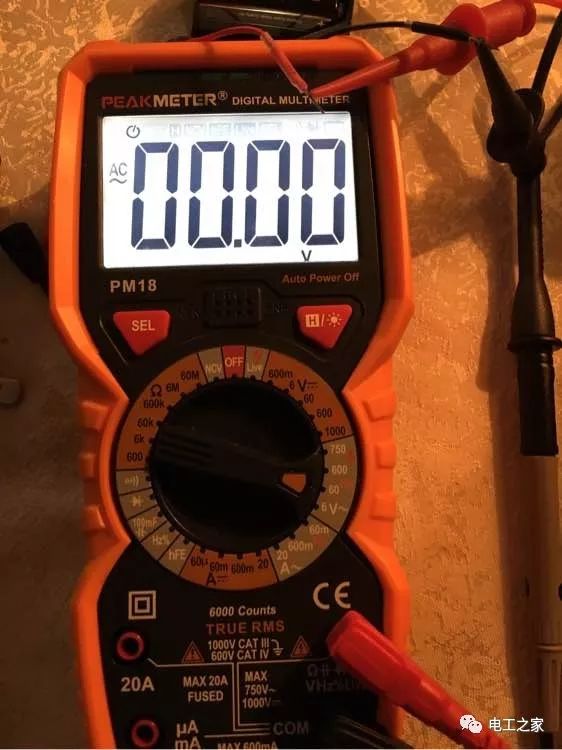
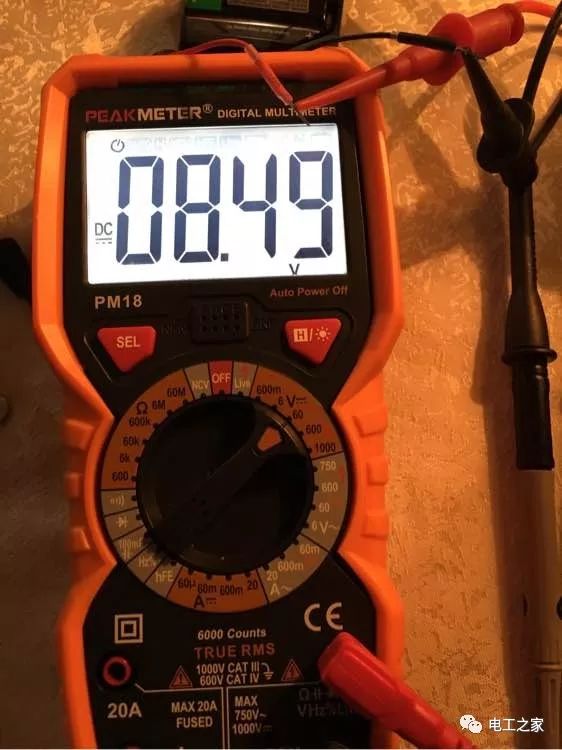
It is not difficult to see that if you measure AC voltage as if it were DC, or measure DC voltage as if it were AC, the readings will be very low, far from the voltage values that common sense would suggest. In simple terms, if you can read a voltage that is considered “normal” according to common sense, if the multimeter is set to AC range, then it is measuring AC voltage, and vice versa~